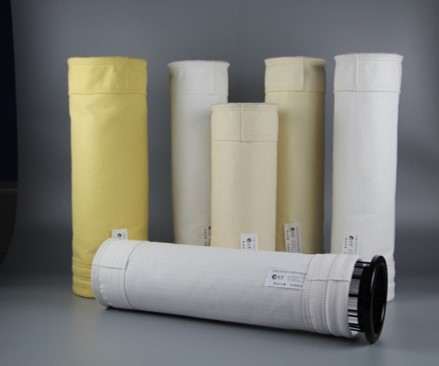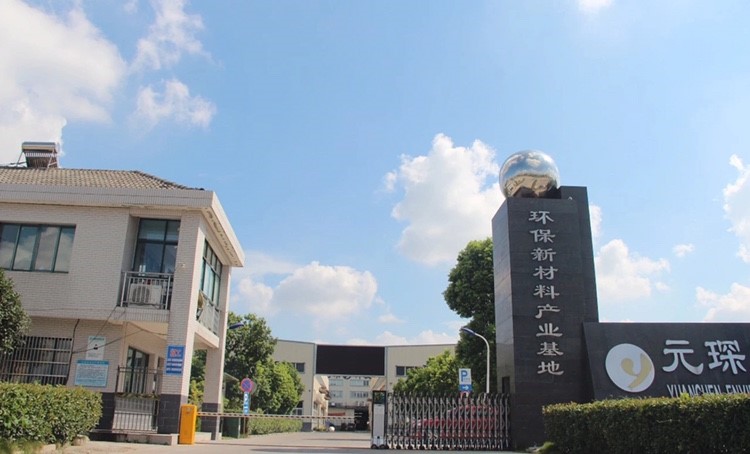
In order to achieve the goal of ultra-low emission of flue gas pollutants, the flue gas treatment environmental island treatment system was born, which provides multiple technical routes through different combinations of configurations to meet the needs of different customers while achieving synergy and efficiency of upstream and downstream pollutant treatment.
The dust filter bag is the first step in the flue gas island system, and it is also the key to the subsequent flue gas treatment. This article will explain the basics of filter needle felt in detail from three aspects: raw material selection, filter needle felt production process and main product characteristics and performance parameters.

A. Raw material selection
Dust filter bag is a fiber as the raw material, can be a single fiber can also be a variety of fiber mixture. Generally, it can be divided into three categories: room temperature materials, high temperature organic materials and high temperature inorganic materials.
1, room temperature materials
(1) polypropylene fiber (polypropylene)
Density 0.91g/cm3, melting point 150 ℃, tensile strength 3.4g/d, ultimate oxygen index 19, thermoplastic fiber.
Filtration properties: can withstand an operating temperature of 80°C under dry conditions; instantaneous use temperature of 100°C. Acid and alkali resistance, moisture resistance is very good, oxidation resistance is weak.
2)Polyester fiber (polyester)
Density 1.38g/cm3, melting point 256℃, tensile strength 5.5g/d, ultimate oxygen index 22, thermoplastic fiber.
Filtration properties: can withstand the operating temperature of 130 ℃ under dry conditions; continuous work above 130 ℃ will become hard; fading, brittle. Poor hydrolysis resistance.
(3) acrylonitrile homopolymer fiber (acrylicacrylic)
Glass transition temperature 1040C At temperatures below 1250C, shows good resistance to organic solvents, oxidizers, inorganic and organic acids. Acrylonitrile homopolymer does not hydrolyze, so it is used to replace polyester in low temperature and chemically corrosive and humid applications. Copolymers of acrylonitrile, on the other hand, are not resistant to hydrolysis; thermosetting fibers.
2、High temperature organic materials
(1) PPS fiber (polyphenylene sulfide)
Density 1.38g/cm3, tensile strength 5.0g/d, ultimate oxygen index 34, with heat resistance, chemical resistance, flame retardancy and other characteristics.
Can be used continuously at a temperature of 190 ℃, the instantaneous temperature can reach 200 ℃; chemical resistance is very good, is a very strong acid and alkaline fiber; its disadvantage is that oxidation resistance is poor, the higher the oxygen content, the lower the temperature to be used.
2)Mid-aromatic polyamide fiber
density 1.3g/cm3, tensile strength 4.9g/d, ultimate oxygen index 29, non-thermoplastic fiber, it will only carbonize or decompose into small molecules at high temperature such as 371℃.
Can withstand the operating temperature of 200 ℃ under dry conditions; is hydrolytic fiber, when high temperature and organic chemicals and moisture will quickly hydrolyze and damage; in the moisture concentration of 10% and weak acidic and neutral environment can be applied to the operating temperature of 190 ℃, especially afraid of SOX erosion;.
3)P84 fiber (PI polyimide)
Density 1.40g/cm3, ultimate oxygen index 38, is irregular trilobal cross-section, increasing the surface area of filtration; has outstanding high and low temperature resistance, incombustibility, electrical insulation and irradiation resistance.
Filtration performance: can be used continuously below 260℃, instantaneous temperature up to 280℃ (less than 200 hours per year cumulatively); with some hydrolysis.
(4) PTFE fiber (poly tetra fluoro ethylene)
Density 2.2g/cm3, melting point ~ 350 ℃, good thermal stability, chemical stability, insulation, lubricity, water resistance, etc.
Filtration performance: high temperature resistance, a wide range of temperatures, can be used at 260 ℃ (high temperature continuous use for a long time, the instantaneous temperature up to 280 ℃; chemical stability, corrosion resistance; good self-lubrication, very low coefficient of friction, filtering wear is very small; PTFE film surface tension is very low, has a good non-stick and water repellent.
5)PSA fiber (aramid)
(polyphenylsulfone terephthalamide fiber) slightly lower strength, other properties similar to aramid, but it is significantly better than aramid in flame resistance and resistance to thermal and oxygen aging, heated at 300 ℃ in hot air for 100h, strength loss of less than 5%, the ultimate oxygen index of more than 33; there are good dyeing, electrical insulation, chemical resistance, radiation resistance, etc..
3、High temperature inorganic materials
1) Glass fiber fabric.
Density 2.54g/cm3, tensile strength of the original filament in 160 ~ 275kg/mm2. high temperature resistance, good dimensional stability, high tensile fracture strength. In terms of chemical erosion resistance, in addition to hydrofluoric acid, high temperature strong alkali, stable to other media. Glass fiber disadvantage is poor folding resistance, generally not used in oscillation or pulse system.
Glass fiber can be used for long-term use under the working conditions of 260 ℃ (medium alkali)/280 ℃ alkali-free), the instantaneous temperature of up to 350 ℃.
2) High silica fiber/ceramic fiber.
3) Basalt fibers.

Yuanchen Technology introduced advanced complete sets of high-end imported equipment German AUTEFA needling production line in 2016, with superb process settings, high-precision online monitoring system, grammage, thickness, width online automatic calibration and other automated functions, which can adapt to the production and online inspection of a variety of specifications of dust filter bags. The next issue will bring you more detailed information about the process of filter needle felt production with the German AUTEFA needling line.